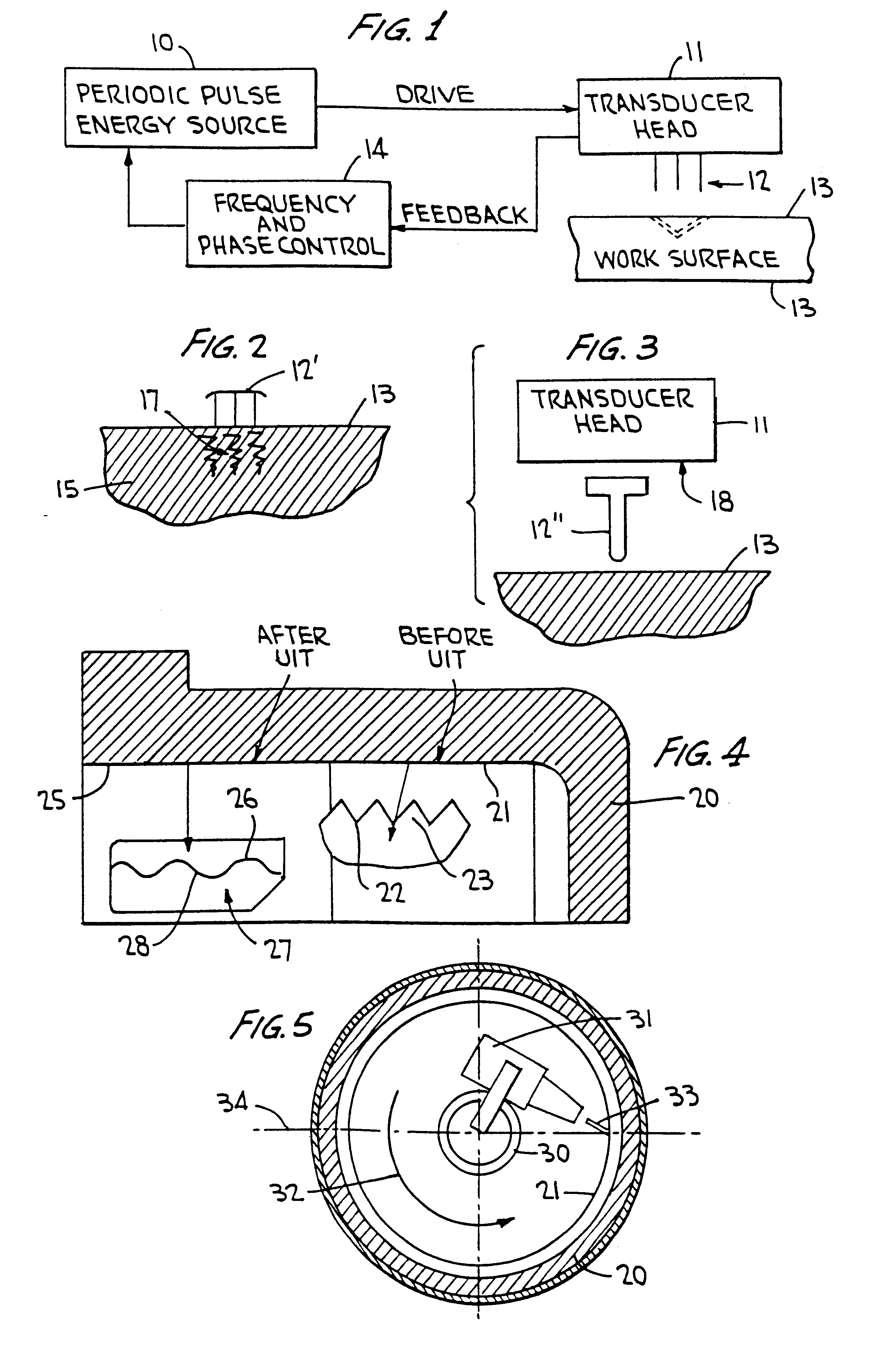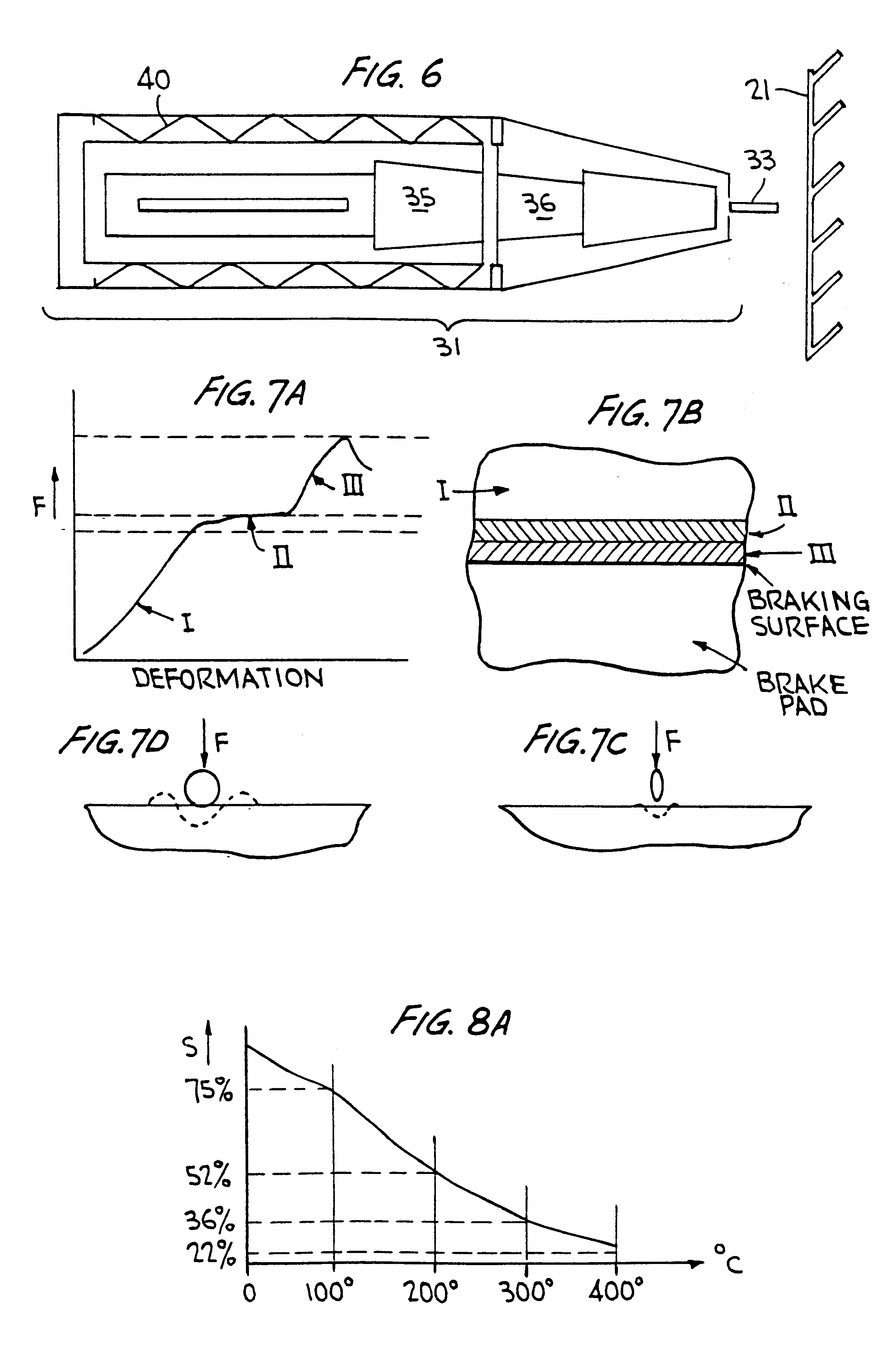Ultrasonic machining and reconfiguration of braking surfaces
a technology which is applied in the field of ultrasonic machining and braking surface reconfiguration, can solve the problems of reducing the service life of the braking surface, and encouraging fatigue cracks, so as to increase the service life and increase the braking service strength
- Summary
- Abstract
- Description
- Claims
- Application Information
AI Technical Summary
Benefits of technology
Problems solved by technology
Method used
Image
Examples
Embodiment Construction
This invention in general introduces novel methods and equipment for machining metallic cast iron brake rotors and brake drums with ultrasonic machining methods for significantly increasing the braking surface available for braking service. In this process, braking surfaces and the adjacent sub-surface regions are plastically altered to remove tooling marks and produce an interfacing surface of specified macro and micro smoothness features better mating with an associated brake pad.
With reference to FIG. 1 of the drawings, this block system diagram identifies the ultrasonic impact operating system for treating rotary braking surfaces at work surface 13, from ultrasonically movable impacting members 12 presenting a set of several, typically three or four, spaced members for impacting the work surface 13 under control of the ultrasonic transducer head 11. The periodic pulse energy source 10, typically operable at ultrasonic frequencies up to 55 kHz drives the transducer head 11, prefe...
PUM
| Property | Measurement | Unit |
|---|---|---|
| resonant oscillation frequency | aaaaa | aaaaa |
| mass | aaaaa | aaaaa |
| mass | aaaaa | aaaaa |
Abstract
Description
Claims
Application Information
 Login to View More
Login to View More - R&D
- Intellectual Property
- Life Sciences
- Materials
- Tech Scout
- Unparalleled Data Quality
- Higher Quality Content
- 60% Fewer Hallucinations
Browse by: Latest US Patents, China's latest patents, Technical Efficacy Thesaurus, Application Domain, Technology Topic, Popular Technical Reports.
© 2025 PatSnap. All rights reserved.Legal|Privacy policy|Modern Slavery Act Transparency Statement|Sitemap|About US| Contact US: help@patsnap.com



